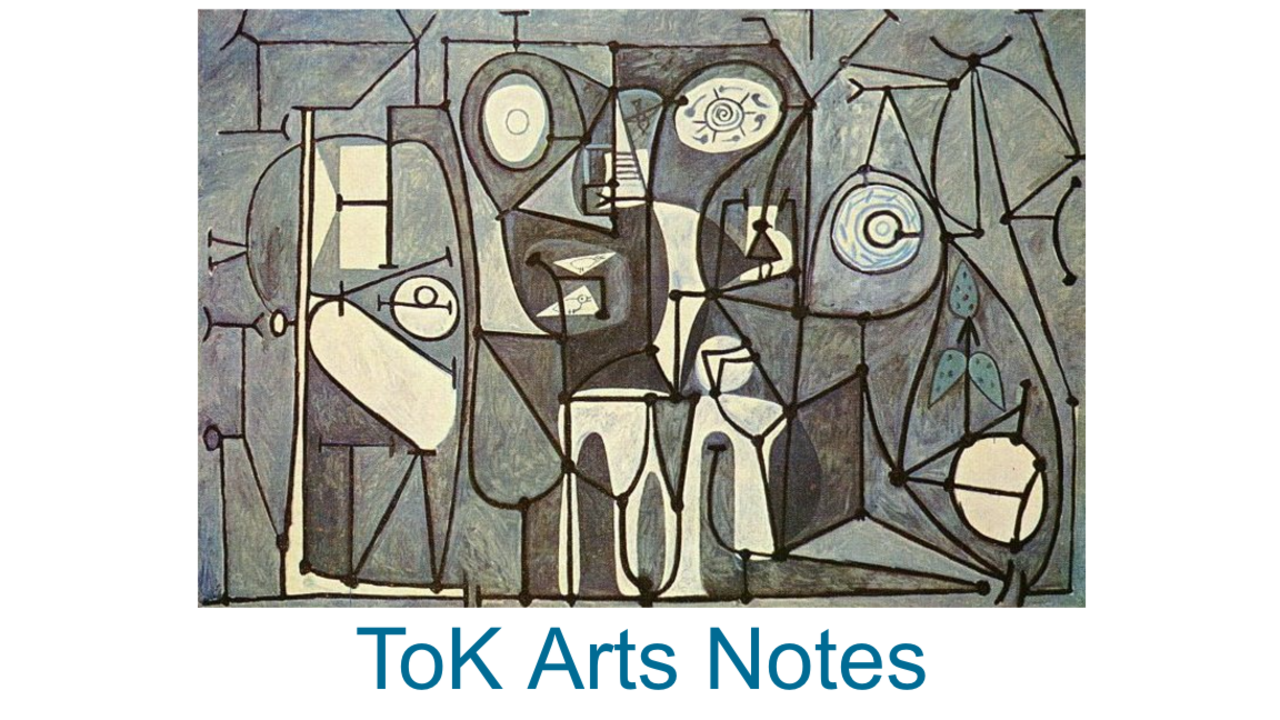Art Notes - Theory of Knowledge

Art Quotes
- "Art is what you can get away with." (Andy Warhol)
- "Art is meant to disturb, science reassures." (Georges Braque)
- "The only end of writing is to enable the readers better enjoy life or better to endure it." (Samuel Johnson)
- 'Lying, the telling of beautiful untrue things, is the proper aim of art." (Oscar Wilde)
- "We all know that Art is not truth. Art is a lie that makes us realize truth." (Pablo Picasso)
- "Without music, life would be a mistake." (Friedrich Nietzsche)
- "By words one transmits thoughts to another; by means of art, one transmits feelings." (Leo Tolstoy)
Definitions of Art
-
"Art is not a handicraft, it is the transmission of feeling the artist has experienced." (Leo Tolstoy)
-
"Art has to move you and design does not, unless it's a good design for a bus." (David Hockney)
-
"Filling a space in a beautiful way. That's what art means to me." (Georgia O'Keeffe)
-
"Art is something we do, a verb. Art is an expression of our thoughts, emotions, intuitions, and desires, but it is even more personal than that: it’s about sharing the way we experience the world, which for many is an extension of personality." (Philosophy Now)
The effects of art
One of the few things artists can tell you for sure is their intentions when they created the work. As Leo Tolstoy said, "“A real work of art destroys, in the consciousness of the receiver, the separation between himself and the artist.” But an artist doesn't know how the work will be received by the public, because their audience contains all kinds of different people, with unique experiences and ideas. The affect of the work of art can be impossible to predict. So artists can perhaps only be sure about their own intentions.
The meaning of art
"Which is the art of painting designed to be—an imitation of things as they are, or as they appear—of appearance or of reality?" (Socrates).
What are really "means" is not something any one person can say definitively. Even the artist who created it doesn't get the final judgement about what a piece of art really means. But the creation of new knowledge happens for the artist as they create and also for the viewer of the art when they experience it. 
To the right is a painting called "Orange, Red, Yellow" by Mark Rothko. It sold for over $86 million. Rothko's paintings are an interesting case. At first glance they can seem like nothing. Rothko said, "If you are only moved by color relationships, you are missing the point. I am interested in expressing the big emotions - tragedy, ecstasy, doom." To convey these, he used simple forms and basic colors. As Richard Dorment explains:
"His art has no meaning beyond what you see, and this in itself is the most profound meaning of all. In front of them we are suspended perpetually in the present moment, for if you were to speak of them in conventional religious terms they offer neither faith nor hope nor the possibility of knowing anything that we can't see or touch or feel in this world. (Dorment).
Rothko "imagined a kind of direct communion between himself and the viewer, one which might touch the viewer with a higher spirituality." (The Art Story).
- - There's more! - -
A premium version of the ToK notes is available, with many more helpful insights into all of the strengths and weaknesses of the WoKs and AoK's. You can join by clicking the link below.


Woods, Tim. “Art Notes - Theory of Knowledge ” IBMastery 4 March 2017. Web. PUT TODAY’S DATE HERE <https://www.ibmastery.com/blog/art-notes-theory-of-knowledge>







